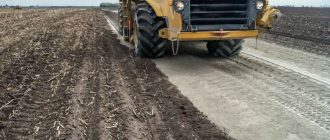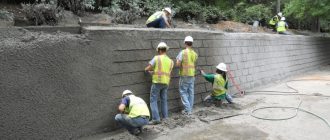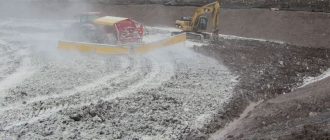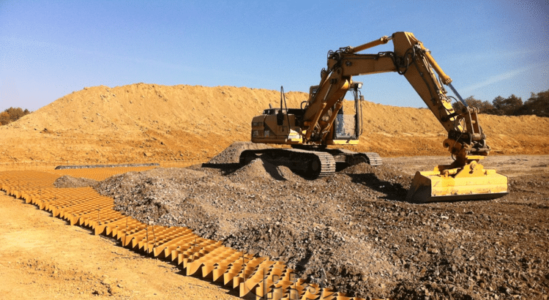
The Future of Soil Stabilization: Trends and Technological Advancements
Soil stabilization is a crucial field in the construction and engineering industries, as it involves the process of improving the strength and durability of soil for various applications. As society continues to urbanize and infrastructure demands increase, the need for innovative and sustainable solutions in soil stabilization becomes more evident. In order to meet these challenges, technological advancements play a pivotal role in shaping the future of this field.
One of the key trends in the future of soil stabilization is the development of eco-friendly and sustainable methods. With growing environmental concerns and the need for greener practices, researchers and engineers are exploring alternative materials and techniques that minimize the use of harmful chemicals and reduce carbon footprint. This includes the use of biopolymers, geosynthetics, and bio-based additives, which offer improved performance while being environmentally friendly.
Furthermore, advancements in geotechnical engineering and materials science are revolutionizing the way soil stabilization is approached. New techniques and technologies, such as soil improvement using geosynthetics and the application of nanotechnology, are enabling engineers to overcome challenges in difficult soil conditions. These innovations provide more efficient and cost-effective solutions, allowing for safer and more sustainable infrastructure development.
In conclusion, the future of soil stabilization lies in the integration of technological advancements and sustainable practices. With the increasing demand for infrastructure and the need for environmental responsibility, the development of new methods and materials will shape the way soil stabilization is approached. By exploring trends and embracing innovation, engineers and researchers can pave the way for a more resilient and sustainable built environment.
Advantages of Soil Stabilization
Soil stabilization offers numerous advantages that make it a highly desirable technological trend in the future of soil management. These advancements in soil stabilization techniques have the potential to revolutionize the way we interact with and utilize soil resources. Here are some key benefits of soil stabilization:
1. Enhanced soil strength: Soil stabilization techniques improve the mechanical properties of soil, increasing its strength and load-bearing capacity. This allows for the construction of stronger and more durable structures on unstable or weak soil.
2. Increased durability: Stabilization helps to mitigate the effects of environmental factors such as erosion, weathering, and moisture on soil. By stabilizing the soil, its durability is significantly improved, leading to longer-lasting structures and reduced maintenance costs.
3. Reduced construction costs: Soil stabilization techniques can help reduce the need for heavy construction equipment and materials, resulting in lower construction costs. By stabilizing the soil, it becomes more suitable for construction, eliminating the need for costly soil replacement or removal.
4. Environmental benefits: Soil stabilization can contribute to environmental sustainability by reducing the need for new soil extraction from natural resources. Additionally, stabilized soil can help prevent soil erosion, sediment runoff, and the release of pollutants into surrounding ecosystems.
5. Versatility: Soil stabilization techniques can be applied to various soil types, including clay, silt, sand, and gravel. This versatility allows for the stabilization of a wide range of soil conditions, making it a highly adaptable and effective method for soil management.
Overall, soil stabilization offers significant advantages in terms of improved soil strength, increased durability, reduced construction costs, environmental sustainability, and versatility. As technological advancements continue to evolve, it is expected that soil stabilization will play a crucial role in the future of soil management and construction practices.
Global Soil Stabilization Market
The global soil stabilization market is experiencing significant growth due to the increasing need for effective soil stabilization in various industries. Growing urbanization, infrastructural development, and construction activities are some of the key drivers propelling the demand for soil stabilization solutions. Technological advancements in soil stabilization techniques have also contributed to the market growth.
One of the major trends observed in the global soil stabilization market is the shift towards sustainable and eco-friendly soil stabilization methods. With the increasing awareness of environmental concerns, there is a growing emphasis on using environmentally friendly solutions that minimize the impact on soil and water quality. This has led to the development of innovative soil stabilization technologies that use organic and bio-based additives.
Another trend in the soil stabilization market is the adoption of advanced geosynthetics for enhanced soil stabilization. Geosynthetics, such as geotextiles, geogrids, and geomembranes, are increasingly being used to reinforce and stabilize soil in various construction projects. These products offer excellent mechanical properties, including high tensile strength, flexibility, and durability, making them ideal for soil stabilization applications.
The future of the soil stabilization market looks promising with ongoing research and development activities aimed at introducing new and improved soil stabilization techniques. Emerging technologies, such as nanotechnology and biotechnology, have the potential to revolutionize the soil stabilization industry by offering more efficient and sustainable solutions.
| – Increasing urbanization and infrastructural development. | – Shift towards sustainable and eco-friendly soil stabilization methods. |
| – Growing construction activities in emerging economies. | – Adoption of advanced geosynthetics for enhanced soil stabilization. |
| – Technological advancements in soil stabilization techniques. | – Ongoing research and development activities in the field. |
In conclusion, the global soil stabilization market is witnessing significant growth driven by various factors, including urbanization, infrastructural development, and technological advancements. The industry is also witnessing trends towards eco-friendly solutions and advanced geosynthetics. With ongoing research and development, the future of the soil stabilization market looks promising, with the potential for revolutionary technologies to further enhance soil stabilization techniques.
Impact of Urbanization on Soil Stability
Urbanization is a global trend that is dramatically transforming the world’s landscapes. As cities expand and populations grow, the demand for infrastructure and housing increases. This in turn leads to increased construction activities, which often result in significant disturbances to the natural soil environment.
Soil stability is crucial for maintaining the health and functionality of urban ecosystems. However, the rapid pace of urbanization presents numerous challenges to soil stabilization. Urban development often involves the clearing of vegetation and the compaction of soil, which can lead to increased erosion and decreased water infiltration rates. Additionally, the introduction of impervious surfaces, such as roads and buildings, can alter natural drainage patterns and further impact soil stability.
Technological advancements in soil stabilization have been developed to address these challenges. Innovations such as geosynthetics, soil bioengineering techniques, and chemical soil stabilizers have shown promising results in mitigating the negative impacts of urbanization on soil stability. These technologies provide alternatives to traditional construction methods by promoting healthier soil conditions, reducing erosion, and improving water infiltration rates.
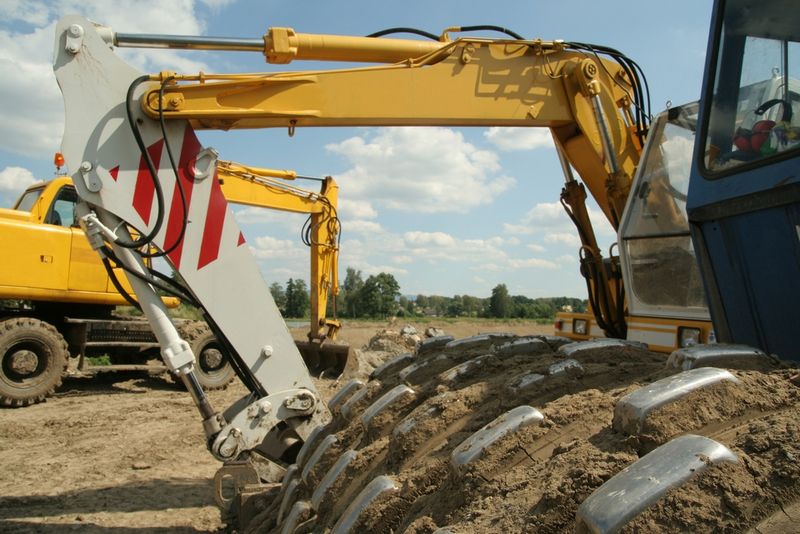
Looking ahead, the future of soil stabilization in the context of urbanization will rely heavily on these technological advancements. As cities continue to grow and expand, there will be an increasing need for sustainable and resilient infrastructure. By investing in research and development, as well as adopting innovative soil stabilization techniques, we can ensure that urbanization does not come at the expense of soil health and ecosystem stability.
Innovations in Soil Stabilization Techniques
As the future of soil stabilization unfolds, there are various trends and technological advancements that are reshaping the industry. These innovations aim to enhance the effectiveness and efficiency of soil stabilization techniques, with a focus on sustainability and long-term durability.
- Geosynthetics: One of the emerging trends in soil stabilization is the use of geosynthetics, which are synthetic materials that are engineered to improve the properties of soil. These materials, such as geotextiles, geogrids, and geocells, can enhance the soil’s strength, prevent erosion, and improve drainage. Geosynthetics offer a cost-effective and environmentally-friendly solution for soil stabilization.
- Chemical additives: Another technological advancement in soil stabilization is the use of chemical additives. These additives, such as lime, cement, fly ash, and polymers, can modify the properties of soil and increase its stability. They can improve the soil’s load-bearing capacity, reduce shrinkage and swelling, and enhance resistance to erosive forces. Chemical additives provide a versatile and customizable solution for soil stabilization.
- Biotechnical approaches: The future of soil stabilization also involves the development of biotechnical approaches. These approaches combine engineering techniques with ecological principles to stabilize soil. For example, the use of vegetation and bioengineering practices can enhance slope stabilization and erosion control. Biotechnical approaches offer a sustainable and environmentally-friendly solution for soil stabilization.
- Remote sensing and data analytics: Technological advancements in remote sensing and data analytics are also playing a significant role in soil stabilization. Remote sensing techniques, such as LiDAR and satellite imaging, can provide accurate and detailed information about soil conditions, allowing for better assessment and planning of soil stabilization projects. Data analytics can analyze large datasets and identify patterns and trends, enabling more informed decision-making in soil stabilization.
Overall, the future of soil stabilization is characterized by a combination of innovative trends and technological advancements that aim to improve the effectiveness, efficiency, and sustainability of soil stabilization techniques. These innovations have the potential to revolutionize the industry and address the challenges of soil degradation and environmental impact.
Sustainable Approaches to Soil Stabilization
In the future, sustainable approaches to soil stabilization will play a crucial role in addressing the environmental challenges of soil degradation and erosion. As the demand for construction and infrastructure development continues to increase, innovative and efficient techniques are needed to stabilize soil and ensure its long-term health and stability.
One of the trends in sustainable soil stabilization is the use of eco-friendly materials. Traditional stabilization methods often involve the use of chemical additives, which can have negative environmental impacts. However, researchers and industry professionals are exploring alternative materials, such as bio-based polymers, plant-based additives, and recycled materials, to mitigate these concerns. These materials provide effective stabilization while minimizing environmental harm.
Technological advancements are also shaping the future of soil stabilization. Innovations such as geosynthetics, remote sensing technologies, and data-driven modeling techniques are leading to more accurate and efficient stabilization methods. Geosynthetics, such as geotextiles and geogrids, can provide additional strength and stability to the soil, reducing the need for excessive excavation and construction materials. Remote sensing technologies, such as satellite imagery and drones, enable real-time monitoring and assessment of soil conditions, allowing for timely interventions and preventive measures. Data-driven modeling techniques, incorporating machine learning and artificial intelligence, help predict and optimize soil stabilization techniques based on historical and real-time data, ensuring sustainable outcomes.
Furthermore, embracing natural soil stabilization methods is gaining momentum in the industry. Techniques like biotechnical stabilization and vegetative measures utilize the inherent properties of soil and plants to enhance stability. Biotechnical stabilization involves the use of living organisms, such as tree roots and grasses, to bind and reinforce soil. Vegetative measures, such as the establishment of vegetation cover and planting of native species, not only stabilize the soil but also promote biodiversity and ecosystem health. These nature-based approaches minimize the use of external materials and resources, making them highly sustainable solutions for soil stabilization.
In conclusion, the future of soil stabilization lies in sustainable approaches that incorporate eco-friendly materials, leverage technological advancements, and embrace natural methods. These trends will enable us to address the challenges of soil degradation and erosion, ensuring a stable and healthy environment for future generations.
Role of Geosynthetics in Soil Stabilization
Geosynthetics play a crucial role in the technological advancement of soil stabilization. With the growing trends in construction and infrastructure development, the demand for effective soil stabilization methods has increased. Geosynthetics have emerged as a reliable solution to enhance the strength and stability of soil.
Geosynthetics are synthetic materials that are used in combination with soil to create a reinforced composite material. They are typically made from polymers such as polypropylene or polyester, and are designed to provide strength, durability, and resistance to various environmental conditions.
One of the key applications of geosynthetics in soil stabilization is in the form of geotextiles. Geotextiles are permeable fabrics that are placed between soil layers to improve their mechanical properties. They can enhance the soil’s resistance to erosion, improve its load-bearing capacity, and reduce differential settlement.
Another important application of geosynthetics is geogrids. Geogrids are high-strength polymer grids that are used to reinforce soil structures. They are commonly used in retaining walls, embankments, and slopes to provide additional stability and prevent soil movement.
Geosynthetics offer several advantages in soil stabilization compared to traditional methods. They are lightweight, easy to install, and cost-effective. They also provide long-term performance, as they are resistant to degradation and have a high tensile strength.
The use of geosynthetics in soil stabilization is expected to grow in the future, as technological advancements continue to enhance their performance and functionality. Innovative products such as geocomposites and geocells are being developed to further improve soil stabilization methods.
In conclusion, geosynthetics play a crucial role in soil stabilization by enhancing the strength, stability, and durability of soil. With the increasing demand for effective soil stabilization methods, geosynthetics offer a reliable solution for the construction and infrastructure industry. As technological advancements continue, the role of geosynthetics in soil stabilization is expected to evolve and expand.
Mining Sector: Soil Stabilization Challenges and Solutions
The mining sector faces unique challenges when it comes to soil stabilization. The ever-increasing demand for minerals and resources has led to the expansion of mining operations into previously untouched areas. As a result, there is a growing need to stabilize soils in order to ensure safe and efficient mining activities.
One of the main challenges faced by the mining sector is the presence of soft or unstable soils. These soils can pose significant risks to mining operations, such as slope instability and soil erosion. Traditional soil stabilization methods, such as compaction and the use of geosynthetics, have been effective to some extent. However, they may not provide long-term solutions and can be costly and time-consuming.
Technological advancements and ongoing research in soil stabilization have shown promising trends for the future of the mining sector. Innovative solutions, such as the use of chemical additives and soil binders, have been developed to improve soil stability. These additives and binders create a strong and durable soil matrix, capable of withstanding the heavy machinery and equipment used in mining operations.
Furthermore, the application of geospatial technology and data analysis has also emerged as a potential solution for soil stabilization in the mining sector. By utilizing remote sensing, drones, and satellite imagery, mining companies can accurately assess soil conditions and identify areas that require stabilization. This allows for targeted and efficient stabilization efforts, reducing costs and minimizing environmental impacts.
In conclusion, the mining sector faces unique challenges in soil stabilization due to the nature of its operations. However, with technological advancements and ongoing research, innovative solutions are emerging to address these challenges. The future of soil stabilization in the mining sector looks promising, with trends such as chemical additives, soil binders, and geospatial technology leading the way towards safer and more sustainable mining practices.
Soil Stabilization in Road Construction
Technological advancements in soil stabilization have revolutionized road construction methods, offering sustainable and cost-effective solutions for infrastructure development. Soil stabilization refers to the process of improving soil properties to enhance its load-bearing capacity and durability. This is particularly crucial in road construction, where the soil beneath the pavement layers must be stable to withstand heavy traffic loads and environmental factors.
The future of soil stabilization in road construction trends towards innovative techniques that minimize environmental impact while maximizing efficiency and longevity. One such trend is the use of environmentally friendly binders that replace traditional cement-based stabilizers. These binders, derived from by-products or waste materials, offer comparable strength and stability while reducing carbon emissions and reliance on non-renewable resources.
Additionally, technological advancements have led to the development of soil stabilization methods that utilize geosynthetics, such as geogrids and geotextiles. These materials are layered within the soil to increase its shear strength and distribute loads more evenly. This not only improves the stability of the roadbed but also reduces the need for intensive excavation and the use of virgin materials.
The future of soil stabilization in road construction also involves the implementation of intelligent monitoring systems. These systems utilize sensors and data analytics to continuously assess soil conditions, allowing for real-time adjustments and proactive maintenance. By monitoring factors such as moisture content, compaction levels, and temperature variations, these systems can identify potential issues and prevent costly pavement failures.
As road infrastructure demands continue to increase, the need for efficient and sustainable soil stabilization methods becomes even more critical. The integration of innovative technologies and eco-friendly practices will shape the future of road construction, ensuring durable and resilient transport networks while minimizing environmental impacts.
Frequently asked questions:
What is soil stabilization?
Soil stabilization is the process of changing the properties of soil to enhance its strength and durability. It involves using various techniques and materials to improve the engineering properties of soil and make it suitable for construction purposes.
What are the common techniques used for soil stabilization?
There are several common techniques used for soil stabilization, including mechanical stabilization, chemical stabilization, and biological stabilization. Mechanical stabilization involves compacting or densifying the soil to increase its strength. Chemical stabilization involves adding chemical agents to the soil to alter its properties and improve its stability. Biological stabilization involves using vegetation or microorganisms to enhance the stability of the soil.
What are the benefits of soil stabilization?
Soil stabilization offers various benefits, such as improving the load-bearing capacity of soil, reducing settlement, preventing soil erosion, increasing resistance to water penetration, and enhancing the overall durability of soil for construction projects. It also reduces the need for soil replacement, making it a cost-effective solution.
What are some of the latest technological advancements in soil stabilization?
There have been several technological advancements in soil stabilization in recent years. One such advancement is the use of geosynthetics, such as geotextiles and geogrids, which provide reinforcement to the soil. Another advancement is the development of chemical additives that can improve soil properties. Additionally, innovative techniques like soil mixing and deep soil mixing have been introduced to enhance soil stability.

